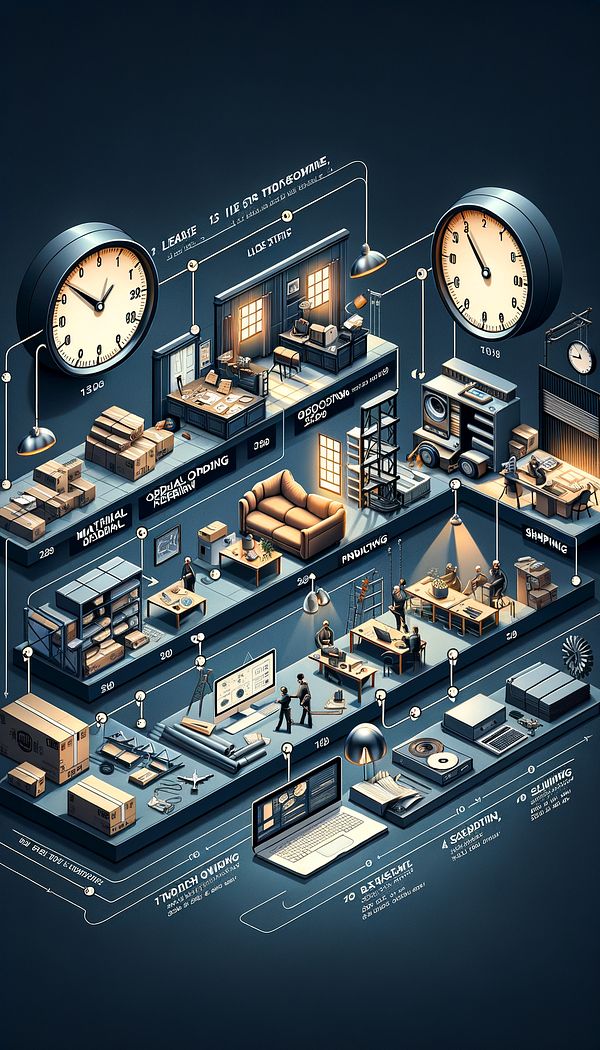What is Lead Time?
Lead time is the duration between the initiation and completion of a process.
Description
In the realm of interior design, lead time refers to the period from the moment an order is placed for materials, furniture, or any other design elements, to the time these items are delivered or ready for installation. Understanding lead times is crucial for project planning and management, as it affects the overall timeline of a design project.
Lead times can vary significantly depending on a multitude of factors, including the type of product, manufacturer schedules, customization requirements, and shipping distances. For custom-made pieces, such as bespoke furniture or tailored lighting fixtures, lead times can be particularly lengthy due to the intricate production processes involved. Consequently, interior designers must account for these time frames when scheduling projects to ensure deadlines are met.
Effectively managing lead times requires clear communication between designers, clients, and suppliers. Setting realistic expectations from the outset and staying informed about any changes in production schedules are key to avoiding delays. Moreover, designers often have to balance multiple orders and coordinate their lead times to align with the project timeline, making lead time management a critical skill in the field of interior design.
Usage
When planning the renovation of a client's living room, an interior designer may need to consider the lead time for a custom-designed couch, which could be 8-12 weeks, in addition to the lead times for obtaining imported wall tiles and a handmade area rug, ensuring all elements arrive in a timely manner to avoid project delays.
FAQs
-
How can lead times vary in interior design projects?
Lead times can vary based on product type, manufacturer schedules, customization levels, and shipping distances. Custom and imported items typically have longer lead times.
-
Why is understanding lead times important in interior design?
Understanding lead times is crucial for accurate project planning, allowing designers to meet deadlines and manage client expectations effectively.
-
How can interior designers manage long lead times?
Designers manage long lead times by setting realistic timelines, maintaining clear communication with clients and suppliers, and coordinating multiple orders to align with project schedules.
Practical Application
For interior designers, effectively managing lead times involves integrating them into project timelines from the beginning. Maintaining a flexible schedule and having contingency plans in place for potential delays can also be beneficial. Regular communication with suppliers to get updates on production and shipping schedules is key to keeping projects on track.
-
Design Styles478 articles
-
Furniture Types599 articles
-
Materials & Textiles360 articles
-
Construction & Building86 articles
-
PVC - Polyvinyl ChloridePVC, or Polyvinyl Chloride, is a versatile synthetic plastic polymer used extensively in interior design.
-
Bed-In-A-BagA bed-in-a-bag is a complete bedding set that includes every piece needed for a bed, all packaged together.
-
Welsh CupboardA Welsh Cupboard is a traditional piece of furniture originating from Wales, characterized by its unique combination of storage and display sections.
-
BatikBatik is a technique of wax-resist dyeing applied to whole cloth.
-
eDesigneDesign is a remote interior design service facilitated through digital communication.
